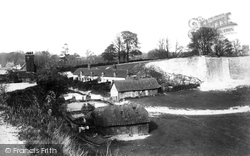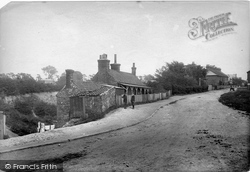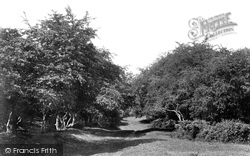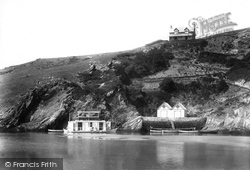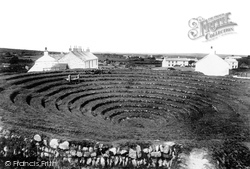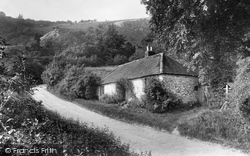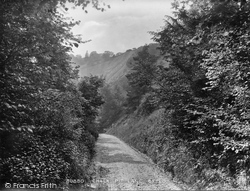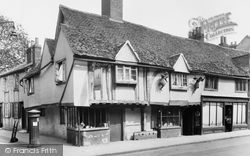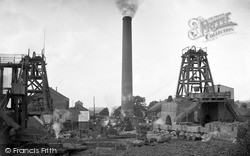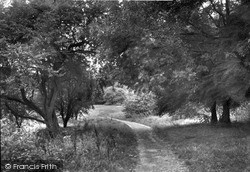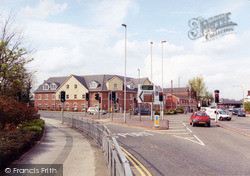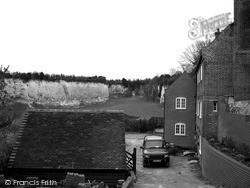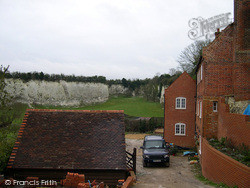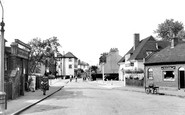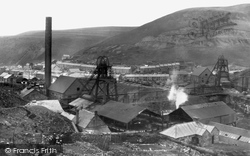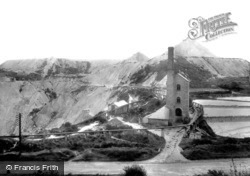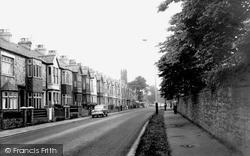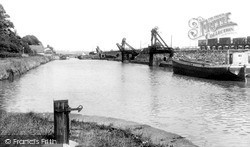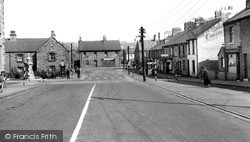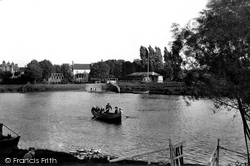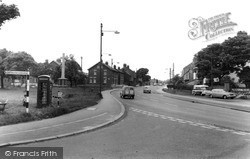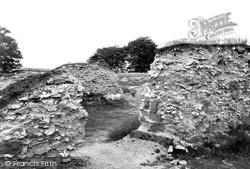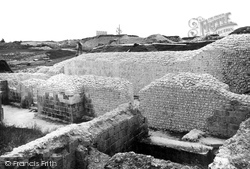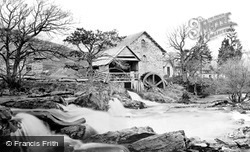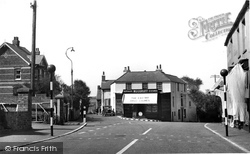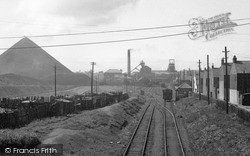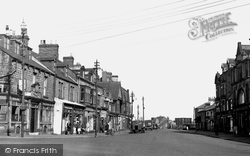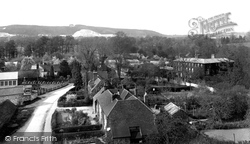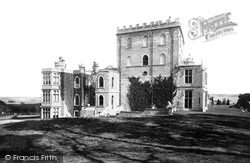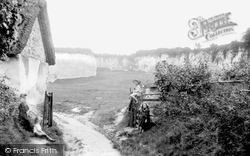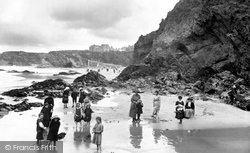Places
15 places found.
Those places high-lighted have photos. All locations may have maps, books and memories.
- Pit, Gwent
- Talke Pits, Staffordshire
- Tunnel Pits, Humberside
- Fenton Pits, Cornwall
- Bedwellty Pits, Gwent
- Slay Pits, Yorkshire
- Tre-pit, South Glamorgan
- Bailey Pit, Gwent
- Moss Pit, Staffordshire
- Red Pits, Norfolk
- Gore Pit, Essex
- White Pit, Lincolnshire
- Even Pits, Hereford & Worcester
- Forest Coal Pit, Gwent
- Michaelston-le-Pit, South Glamorgan
Photos
89 photos found. Showing results 1 to 20.
Maps
84 maps found.
Books
Sorry, no books were found that related to your search.
Memories
867 memories found. Showing results 1 to 10.
Childhood Memories
My grandfather lived in the tied cottage on the Plas farm in Lower Machen. His name was Albert Thomas, known as Bert. I have many fond memories of him and his cottage and playing around the farmyard and watching him complete ...Read more
A memory of Lower Machen in 1977 by
Little Hills Pit Lane
Born 1937 Kiveton family. Remeber getting on the bikes with my friends, riding over what we called the little hills down the pit lane to the tunnel top. Carrying an old clothes horse and a blanket, that was our tent. Take ...Read more
A memory of Kiveton Park in 1940 by
I Lived In Caerau On And Off During The Period 1950 1958
My mother's parents lived in Lloyd St for many years. Grandad (known by me I am told as 'dampa') was a coal miner at the pit up the hill from Lloyd St and I remember him showing me the pit ponies ...Read more
A memory of Caerau by
Llanhilleth
I was born in my aunt's [Ciss Smith] house in Caefelin Street, Llanhilleth, during late 1944, early in the morning. At the same time a girl named Angela [Simpkins] was born in the house opposite at the same time. My Aunt Ciss was ...Read more
A memory of Llanhilleth in 1944 by
Hillingdon In The 1940s And 1950s
My family lived in Hillingdon from the beginning of ww2 until 1953 when we moved from Biggin Hill. Our first home was a top floor flat in Pinewood Ave which was not ideal for a family with 4 children and then ...Read more
A memory of Hillingdon by
Miners Strike
My father (Robert Summers born Dec 1916) was 6 months old when his father was killed in Ypers. A few years later my gran remarried a miner, James MacLachlan, an ex Cameronian. My father told me a story of how, during the strike and at ...Read more
A memory of Twechar in 1920 by
Happiest Days Of My Life 1947 1966
I was born in Glenavon Terrace in 1945, my parents moved to Cambridge in 1946. Every year since I can remember, I spent all my holidays, Xmas, Easter, summer, every spare moment I could back in what I believe is home. ...Read more
A memory of Caerau by
Its Panto Time! Oh Yes It Is!
You ever been to a panto? Oh yes you have!!! Remember! You go into a large packed hot old theatre full of sticky shouting children and adults trying to look as if they are not enjoying themselves. The house ...Read more
A memory of Newcastle upon Tyne by
Early Memories
My birth on 30 Nov 1946 at 34 Oldberry Road, Burnt Oak, is where it all started for me, but my mother & her parents moved into the house when it was built for the LCC. She's 89 now, but recalls that she, as a 9-yr-old in 1928, ...Read more
A memory of Burnt Oak in 1946 by
A Ham Family
My mother and father lived in Evelyn Road - the cul-de-sac opposite the large white house in the distance - mother still there - lived in two of the houses for all her eighty years - married the boy next door (well.. at the top of the cul- ...Read more
A memory of Ham in 1955 by
Captions
118 captions found. Showing results 1 to 24.
Houses for the colliers were built around the pit which dominated their lives.
This is the Lower Ninestones china clay pit, with waste being hauled up inclines to older flat-topped tips on the left and newer 'sky tips' on the right.
When this picture was taken, Ryton was a pit village in County Durham with no less than five working pits in the immediate vicinity.
Even in the late 18th century there were ninety pits in the Forest, with a combined annual output of about 100,000 tons of coal.
To the east of the High Street there were several chalk pits: this was the biggest. It lies to the south of Carshalton Road, and east of the Congregational Church.
Langley Park is a pit village just off the road between Lanchester and Durham. The road to the left goes to Quebec and Cornsay Colliery.
There has been a ferry at Farndon for centuries; these days the village offers river users extensive facilities, including a large marina created out of some old gravel pits.
In 1960 Ryhope was still very much a pit village, with its own colliery. In 1967 Ryhope, along with Silksworth, East Herrington, South Hylton, and Castletown, was incorporated into Sunderland.
The garderobe pits - the medieval toilets - are shown on the foreground, with the stone and flint walls of the tower behind.
The garderobe pits—the medieval toilets—are shown on the foreground, with the stone and flint walls of the tower behind.
One of its more interesting features is what is thought to be an ancient beheading pit.
Eastry was home to many miners who worked down the east Kent pits. The mother of the actress Susan Hampshire once lived here too.
In 1954 the NCB sank its first pit in the country at Lea Hall, Rugeley.The colliery opened in July 1960; most of its output went by conveyor direct to nearby Rugeley, a power station.
When the mining industry was nationalised in 1947, there were 127 active pits in County Durham employing 108,000 mineworkers.
Annfield Plain, to the north-west of Durham, was one of several towns to attract industrial development as the number of active pits declined.
Modern buildings have crowded in along the northern part of Betchworth's long village street, but the line of the North Downs and the big chalk pit remain much the same, although the downs are far more
In 1954 the NCB sank its first pit in the country at Lea Hall, Rugeley. The colliery opened in July 1960; most of its output went by conveyor direct to nearby Rugeley, a power station.
Fern Pit, at the mouth of the Gannel, was owned by generations of Northeys, who also ran the ferry to Crantock, which is in the background on the other side of Crantock Beach.
The present building was largely the work of the Victorian Colonel Waugh, who developed the island by opening clay pits and potteries in its wildest corners.
All along the Nene valley hereabouts are flooded iron ore pits, some of which have been turned into fishing or boating lakes.
French soldiers were held as prisoners at Odiham during the Napoleonic wars, living in a camp dug out of an old chalk pit on the Alton road.
Covering some eight acres, this is believed to be the largest chalk pit in Hampshire.
The rocky cliff faces are scored and pitted by wind and waves, causing sizeable blowing holes and fissures.
China clay from the St Austell pits was brought to the harbour by trains, which carried coal for the gasworks on the return journey.
Places (15)
Photos (89)
Memories (867)
Books (0)
Maps (84)




